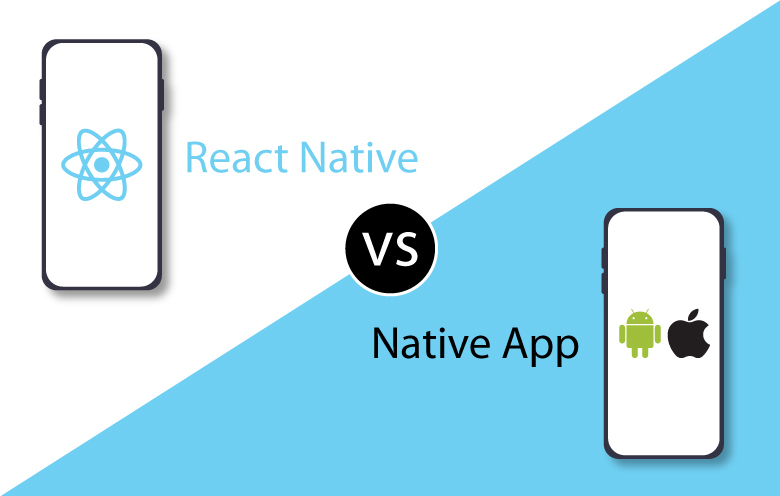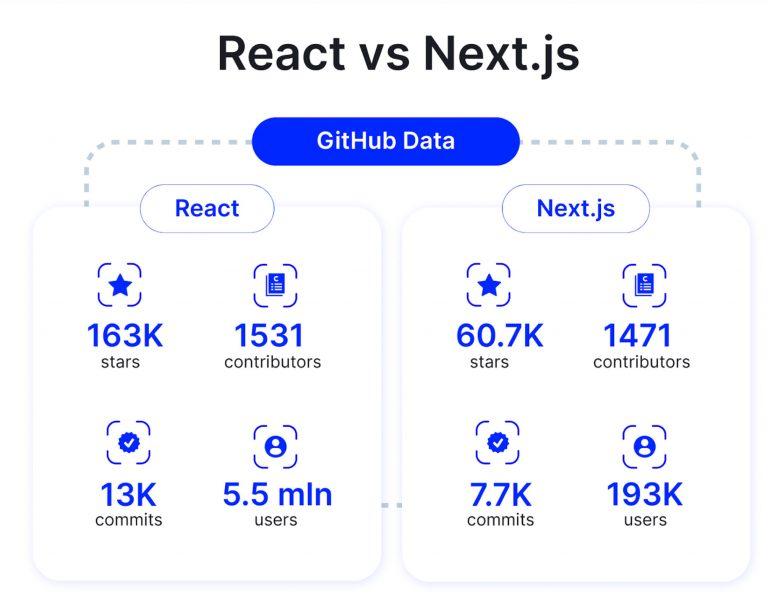The JavaScript ecosystem is in a perpetual state of evolution. Frameworks rise, paradigms shift, and what was considered cutting-edge yesterday can become a legacy approach tomorrow. In this dynamic landscape, adaptability is key to survival and relevance. One of the most interesting stories of this evolution is that of Blitz.js. Initially launched as a “Zero-API” full-stack framework inspired by Ruby on Rails, Blitz promised to bring unparalleled simplicity and productivity to the world of React development. It aimed to solve the fatigue of building and maintaining a separate REST or GraphQL API layer, a common pain point for full-stack developers. However, as the ecosystem changed, with frameworks like Next.js rapidly expanding their full-stack capabilities, Blitz.js embarked on a fascinating journey of transformation. This article delves into the evolution of Blitz.js, exploring its core concepts, its strategic pivot to a toolkit, and the exciting community-driven ideas shaping its future. We’ll examine how its foundational principles remain relevant and how it continues to offer value in the modern web development stack.
The Original Vision: The ‘Zero-API’ Data Layer
At its inception, the primary selling point of Blitz.js was its “Zero-API” data layer. This wasn’t about having no API at all; rather, it was about abstracting away the boilerplate and complexity of creating and consuming one. The core innovation was a powerful RPC (Remote Procedure Call) mechanism that allowed developers to write server-side code (queries and mutations) and import it directly into their front-end React components as if it were a local function. This created a seamless, monolithic development experience (a “monorepo on steroids”) with end-to-end type safety, a holy grail for developers working with TypeScript News.
This approach eliminated the need for manually defining API endpoints, managing serialization/deserialization, or writing data-fetching logic with libraries like Axios or Fetch. Under the hood, Blitz handled the HTTP requests, data transport, and error handling, allowing developers to focus purely on business logic. This concept was a significant productivity booster and a major draw for teams looking to build applications quickly and efficiently.
How Blitz RPC Works: A Practical Example
Let’s look at a classic example. Imagine you want to fetch a specific project from your database. With Blitz, you would define a query function on the server.
// app/projects/queries/getProject.ts
import { resolver } from "blitz";
import db from "db";
import { z } from "zod";
const GetProject = z.object({
id: z.number(),
});
export default resolver.pipe(
resolver.zod(GetProject),
resolver.authorize(), // Ensures the user is logged in
async ({ id }, ctx) => {
const project = await db.project.findFirst({
where: { id, userId: ctx.session.userId },
});
if (!project) throw new Error("Project not found");
return project;
}
);This server-side function uses Prisma for database access and Zod for input validation. The magic happens when you use this query in a React component. Blitz’s build process creates a special hook that you can import directly.
// app/projects/components/ProjectDetails.tsx
import { useQuery } from "blitz";
import getProject from "app/projects/queries/getProject";
function ProjectDetails({ projectId }) {
const [project, { isLoading, error }] = useQuery(getProject, { id: projectId });
if (isLoading) return <div>Loading...</div>;
if (error) return <div>Error: {error.message}</div>;
return (
<div>
<h1>{project.name}</h1>
<p>{project.description}</p>
</div>
);
}
export default ProjectDetails;Notice how `getProject` is imported and used directly. There’s no `/api/projects/:id` endpoint to worry about. The types for `project` are automatically inferred from the return type of the server function, providing a fantastic developer experience. This tight integration was a game-changer, mirroring the cohesive feel of frameworks like Ruby on Rails or Laravel but within the modern JavaScript and React News ecosystem.
The Strategic Pivot: Becoming a Toolkit for Next.js
While Blitz.js was gaining traction, the broader web development landscape was not standing still. Vercel’s Next.js, which Blitz was forked from, was evolving at a breakneck pace. It introduced its own full-stack solutions like API Routes, Incremental Static Regeneration (ISR), and eventually, the paradigm-shifting React Server Components. The Next.js News cycle was dominated by these powerful new features, making it increasingly difficult for Blitz.js to maintain its own fork and compete as a standalone framework.

The Blitz.js core team made a pragmatic and forward-thinking decision: instead of competing with Next.js, they would embrace it. They refactored Blitz from a monolithic framework into a modular toolkit that could be installed on top of an existing Next.js application. This allowed developers to get the best of both worlds: the powerful “Zero-API” data layer and auth utilities of Blitz combined with the cutting-edge rendering patterns, performance optimizations, and massive ecosystem of Next.js. This pivot ensured the long-term viability of Blitz’s core ideas, positioning it as a powerful enhancement rather than a direct competitor. This move was a testament to the project’s adaptability, a crucial trait in an environment with constant Vite News and Turbopack News shaking up the build tool space.
Integrating the Blitz Toolkit
Adding Blitz to a Next.js project is straightforward. After installing the necessary packages, you wrap your Next.js configuration with the `withBlitz` helper. This injects the necessary build-time and runtime logic to make the RPC magic happen.
// next.config.js
const { withBlitz } = require("@blitzjs/next");
const config = {
// Your existing Next.js config
reactStrictMode: true,
};
module.exports = withBlitz(config);With this simple change, you can start creating `queries` and `mutations` folders and enjoy the same seamless data-fetching experience directly within your Next.js application. This modular approach is far more sustainable and allows Blitz to focus on what it does best: simplifying full-stack data communication.
The Future Beckons: Community-Driven Innovation
With the pivot successfully completed, the conversation within the Blitz.js community has shifted towards the future. What’s next for the “Zero-API” layer? How can it adapt to and leverage the latest advancements in the JavaScript world? Several exciting ideas are being discussed that could shape the next chapter of Blitz.js News and influence other frameworks, from RedwoodJS News to AdonisJS News.
Deeper Integration with React Server Components (RSC)
React Server Components (RSCs) represent a fundamental shift in how React applications are built, allowing components to run exclusively on the server. This is a natural fit for Blitz’s philosophy. The community is exploring how the Blitz RPC layer can be adapted to provide an even more elegant data-fetching experience within RSCs. Instead of using a `useQuery` hook, you could directly `await` the RPC function inside a Server Component, completely eliminating client-side data-fetching waterfalls for initial page loads.
A hypothetical implementation might look like this:
// app/projects/[id]/page.tsx (React Server Component)
import getProject from "app/projects/queries/getProject";
import { invoke } from "@blitzjs/rpc"; // Hypothetical new API
// This is a Server Component, so we can use async/await
export default async function ProjectPage({ params }) {
// Directly invoke the server query without a hook
const project = await invoke(getProject, { id: Number(params.id) });
return (
<main>
<h1>{project.name}</h1>
<p>{project.description}</p>
{/* Client components for interactivity can be nested here */}
</main>
);
}This would further streamline the developer experience, combining the simplicity of Blitz RPC with the performance benefits of RSCs. It’s a powerful combination that could set a new standard for full-stack development in the React ecosystem.
Becoming Framework-Agnostic

Another compelling idea is to decouple the Blitz RPC layer from Next.js entirely, making it a standalone library that could be used with other meta-frameworks. Imagine using the same type-safe RPC mechanism in a project built with Remix News, Svelte News, or even SolidJS. This would transform Blitz from a Next.js-specific toolkit into a universal solution for simplifying client-server communication in any JavaScript application. This move would significantly broaden its appeal and impact, positioning it as a key player in the wider Node.js News landscape alongside backend frameworks like NestJS News and Fastify News.
Best Practices and Optimization
Whether you’re a seasoned Blitz developer or just getting started, following best practices is crucial for building scalable and maintainable applications.
Structure and Organization
Keep your queries and mutations focused. Each function should have a single responsibility. For complex business logic, consider abstracting it into “services” or “use cases” that your RPC functions can call. This keeps your RPC layer thin and your core logic decoupled and easier to test. Tools like Jest News or the increasingly popular Vitest News are excellent for testing this business logic in isolation.
Robust Authentication and Authorization

Blitz provides powerful, built-in utilities for handling authentication and authorization. The `resolver.authorize()` middleware is a simple yet effective way to ensure a user is logged in. For more granular, role-based control, you can pass a custom function to check for specific permissions. This is a critical security practice.
// app/projects/mutations/deleteProject.ts
import { resolver } from "blitz";
import db from "db";
import { z } from "zod";
const DeleteProject = z.object({
id: z.number(),
});
export default resolver.pipe(
resolver.zod(DeleteProject),
// Custom authorization logic
resolver.authorize(async ({ id }, { session }) => {
if (!session.userId) return false;
const project = await db.project.findUnique({ where: { id } });
// Only allow the project owner or an admin to delete
if (project?.userId === session.userId || session.role === "ADMIN") {
return true;
}
// Throwing an error is also a valid way to deny access
throw new Error("You are not authorized to perform this action.");
}),
async ({ id }) => {
await db.project.delete({ where: { id } });
return true;
}
);By embedding authorization logic directly within the mutation, you create a secure-by-default architecture that is difficult to bypass.
Conclusion: The Enduring Value of Simplicity
The journey of Blitz.js is a powerful case study in technical evolution and community resilience. It began with a bold vision to simplify full-stack development, and while the implementation has changed, that core mission remains. By pivoting from a monolithic framework to a flexible toolkit for Next.js, Blitz has secured its place in the modern web development stack. Its “Zero-API” data layer continues to offer one of the best developer experiences for building type-safe applications.
As the community explores deeper integration with React Server Components and the potential for a framework-agnostic future, it’s clear that the story of Blitz.js is far from over. Its focus on developer productivity and abstracting away complexity is a timeless principle. For developers navigating the ever-changing tides of JavaScript News, Blitz.js remains a compelling tool that proves that sometimes, the most powerful feature is simplicity itself.

